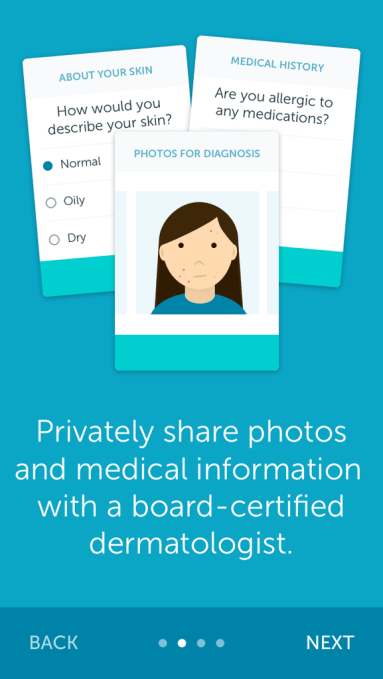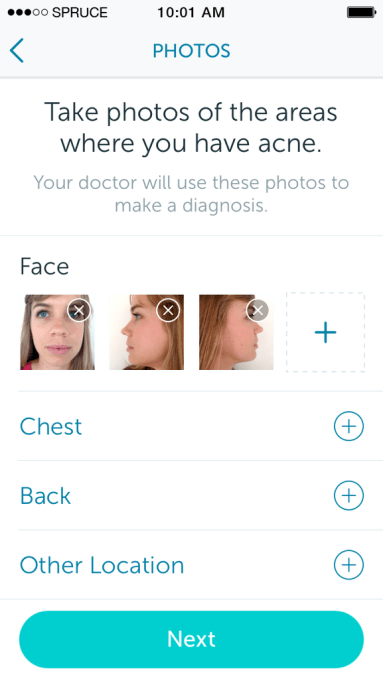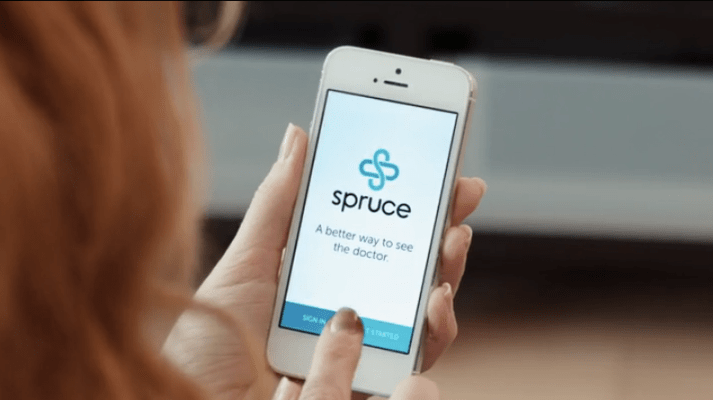There have been some great strides in telemedicine lately. This virtual way to see the doctor cuts down on commutes, wait time and potential costs associated with in-person visits. But most of what’s currently out there requires some sort of video conferencing system and a set appointment with the doctor. Spruce is a new app that aims to let you converse with the doctor at your own convenience. The app, the brainchild of former Kleiner Perkins Caufield & Byers partner Ray Bradford, launched in the App Store this morning.

It works by letting patients fill out the usual form they’d normally spend time doing at the doctor’s office and then taking a picture of their skin to send to the doctor at their own convenience. It’s reminiscent of the First Derm app. That one also lets you send in pictures of your skin condition, but started out with a focus on STDs. First Derm has since expanded on that to include a focus on many other skin conditions. It works in much the same way as Spruce, adding info and taking a picture to send to the doctor for assessment. Both use board certified dermatologists to assess and recommend treatment. Both also cost $40 for each assessment and both claim to deliver that assessment to you within 24 hours.

The two apps differ in that First Derm will either recommend an over-the-counter treatment or suggest you go see a doctor in person and then help you locate the one nearest to you. Spruce actually promises in-app treatment without the need to see a doctor in person.
First Derm launched in Sweden a few years back but the company relocated and launched here in the States earlier this summer. Bradford didn’t seem familiar with First Derm and said he was not aware of any similar services to Spruce.
While the acne treatment market seems niche, Bradford hinted he had broader plans for the company in the future. “This will eventually be the majority way that people get care in America. We think there will be 10 times the companies like this next year that are into telemedicine. The difference is we can be a comprehensive treatment app,” says Bradford. He worked heavily with Kleiner Perkins life sciences investments and as such has an interest in future health tech.
Bradford and his team have also been endowed with $2 million in seed money for Spruce, led by his former firm. Both Baseline and Cowboy Ventures also contributed to the round.
Spruce’s tech could be applied to a lot of different kinds of doctors’ visits, and Bradford hints that the future roadmap for the app will be just that. For now, the app only focuses on dermatology cases. The skin care market is wide, though. Dolcera.com points out that 85-100% of people will have some sort of skin condition in their lives and IBIS claims the U.S. dermatology market rakes in over $11 billion in annual revenue.
The Spruce app is pitted against the previously mentioned First Derm app in many ways, but it also makes sense for Spruce to test this niche market first. Skin is an obvious choice for a testing ground in an app that uses visual cues to prescribe treatment. While First Derm seems to want to stick with just dermatology issues, Spruce actually has bigger designs in the medical tech space. Spruce also includes patient follow-up and help to find a prescription fulfillment service (such as the nearest Walgreens, for instance). It will be interesting to see what happens with Spruce down the road. Right now, Spruce is only available for patients 18+ in four states: California, Florida, New
York and Pennsylvania.
